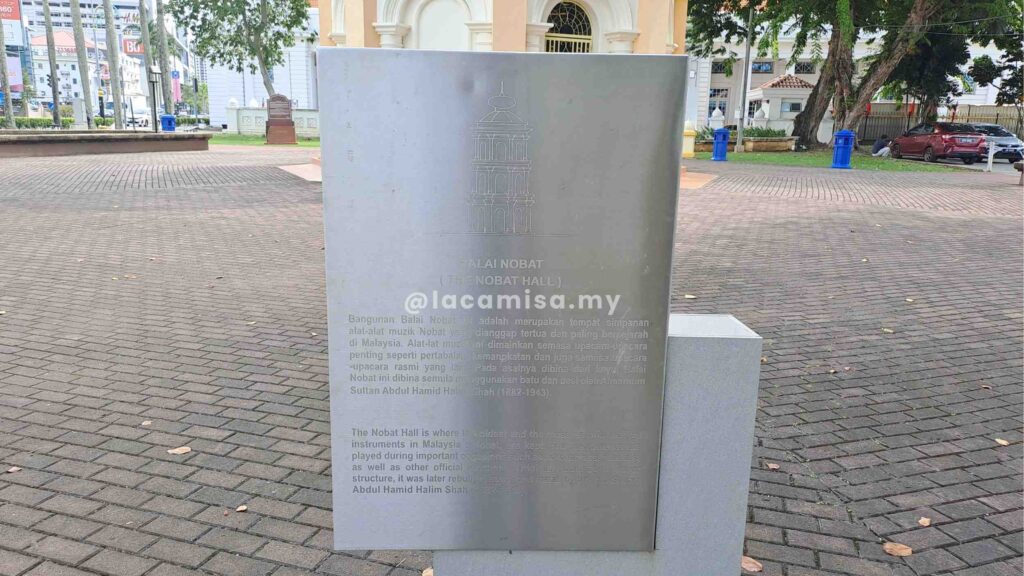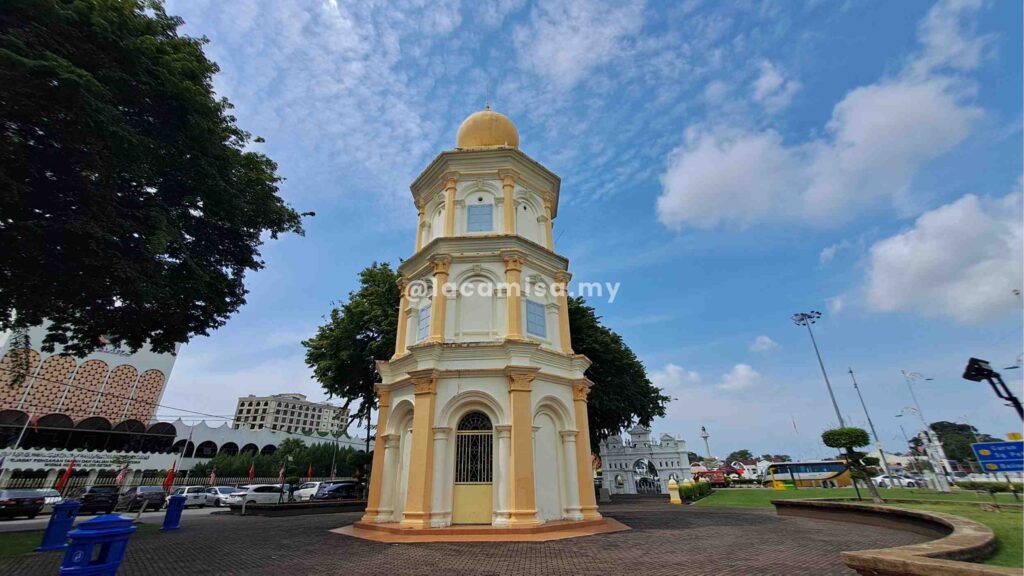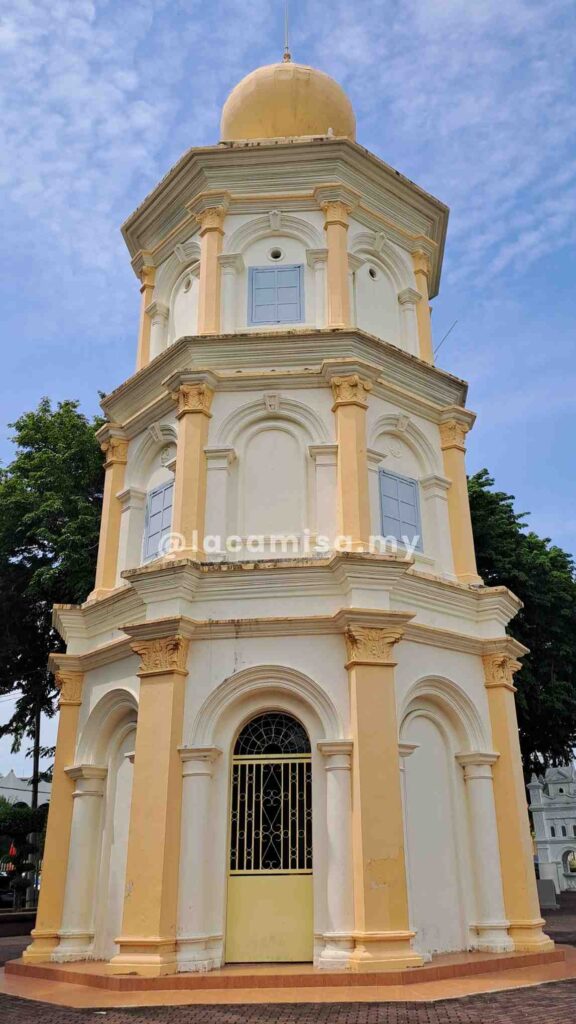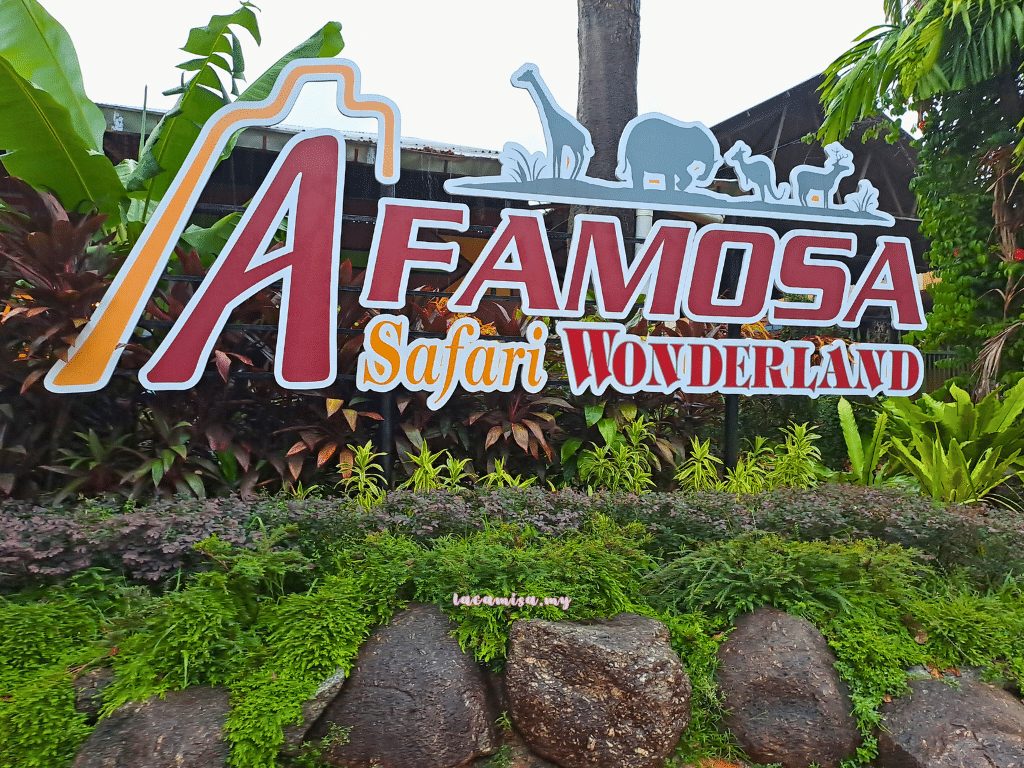Introduction
Balai Nobat, a term that resonates deeply within the cultural fabric of Malaysia, particularly in the state of Kedah, serves as a significant symbol of royal heritage and musical tradition. This unique structure is not merely a building; it embodies the historical narratives and artistic expressions of the region, making it one of the must-visit destinations in Malaysia for both locals and visitors alike.
In this ultimate guide, we will review the historical background of Balai Nobat, its architectural evolution, definition, cultural significance, and other vital aspects to appreciate its role in preserving the rich heritage of Kedah.
Historical Background of Balai Nobat
Balai Nobat or Nobat Hall is a significant cultural and historical structure located in Alor Setar, Kedah. It serves as the storage space for Malaysia’s most ancient and historically significant musical instruments, the Nobat, the royal musical instruments of the Kedah Sultanate. Traditionally, these instruments play a crucial role during royal ceremonies such as coronations, weddings, funerals, the passing of a Sultan and other state functions.

Historically, the origins of the Nobat instruments can be traced back to a gift from Sultan Mahmud of Melaka to the Sultan of Kedah, symbolizing the close ties between these two regions during the period of Melaka’s influence. Kedah’s Nobat is regarded as one of the oldest ensembles within the Malay Sultanate tradition.
What Exactly is the Nobat?
The nobat is an ensemble consisting of 6 types of traditional Malay instruments: Serunai, Nafiri, Nahara,Gendang Ibu, Gendang Anak and Gong. Another important item is called semambu, made from semambu rattan. Only members of the selected lineage called ‘orang kalur’ are chosen exclusively to play these instruments, continuing melodies that have been passed down from time to time.
(Source: National Department for Culture and Arts (JKKN), Ministry of Tourism, Arts and Culture)
Architectural Evolution of Balai Nobat

The Nobat hall, which was first constructed in timber, was later reconstructed in stone and metal under the reign of Sultan Abdul Hamid Halim Shah (1882–1943). Architecturally, Balai Nobat is notable for its octagonal shape and bulbous-shaped dome, which reflects the traditional Malay design aesthetics and intricate craftsmanship. This showcases the evolution of architectural practices in the region during the era of Sultan Abdul Hamid Halim Shah.
The Significant Role of Balai Nobat in Kedah’s Culture and Heritage
Balai Nobat: A Cultural Pillar of Kedah’s Royal Heritage

The Balai Nobat serves as a cultural cornerstone in the Malay community, embodying the rich traditions and royal heritage of the region. By performing at royal occasions, the nobat reinforces the connection between the monarchy and the people, highlighting the importance of tradition in contemporary society.
Nobat Music in Religious Ceremonies and Community Life
Moreover, besides royal events, the Balai Nobat is also integral to the ceremonial practices that mark important religious occasions. The ensemble’s music is often played during the signaling of Ramadan and the two Eid celebrations. The melodies produced by the nobat evoke a sense of nostalgia and pride among the locals, reminding them of their shared history and cultural values.
Can You Enter Balai Nobat in Alor Setar, Kedah?
Entry into the building is restricted, however visitors can admire the exterior of Balai Nobat, adorned with intricate architectural details that capture the grandeur of its historical significance. Many visitors take the opportunity to photograph the landmark from various angles, making it a popular spot for capturing the essence of Alor Setar’s heritage.
Tips to Locate Balai Nobat

Visitors can easily recognize Balai Nobat in Alor Setar by its distinct yellow façade, strategically located directly opposite the iconic Masjid Zahir and the nearby Clock Tower. Within this historic area, visitors will find other notable historical landmarks in Kedah such as the High Court Building, the archway replica of Istana Kota Tengah and the Kedah State Museum. Together, these sites enhance the appeal of Balai Nobat as one of the must-visit destination in Alor Setar, Kedah.
Conclusion
In conclusion, the Balai Nobat stands as a significant cultural and historical landmark in Malaysia, particularly in the state of Kedah. Its architectural beauty and the rich traditions associated with it reflect the deep-rooted heritage of the region. Plus, visiting the Balai Nobat offers a unique glimpse into the royal history of Kedah, making it one of the must-see attractions in Malaysia for both locals and tourists alike. The balance between preserving its historical significance and adapting to contemporary cultural dynamics will determine the future relevance of this iconic structure.








